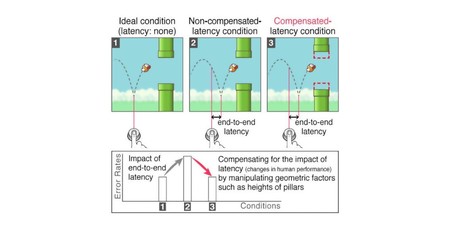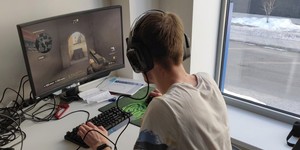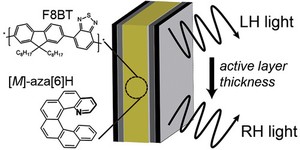Researchers' self-modifying game hides input lag
June 26, 2019 | 11:15
Companies: #aalto-university #korea-advanced-institute-of-science-and-technology

A team of researchers at the Korea Advanced Institute of Science and Technology (KAIST) and the Aalto University in Finland have developed a system which, they claim, can compensate for control latency - lag - in games, by having the game modify itself automatically.
For the majority of games, input lag - the time between pressing a button and having the character on-screen react to that input - is a real problem. Twitch-gamers can spot the difference between monitors and TVs with input lag measured in milliseconds, and the time taken for network traffic to reach a remote data centre and come back again is still an issue for cloud-based gaming.
Researchers at the Korea Advanced Institute of Science and Technology (KAIST) and the Aalto University in Finland, though, have come up with a novel approach to resolving the latency problem: A game which automatically adjusts its own layout to compensate for measured latency.
To prove the mathematical model behind the concept, the researchers turned to a relatively simple game: Flappy Bird, the one-input obstacle-dodging mobile game that caused a huge stir on its launch for Apple's iOS devices. In its modified form, the game uses a mathematical model which predicts players' success rate in avoiding the obstacles at a range of latencies and then physically adjusts the obstacles - making the gaps wider if the latency is high, and narrowing them again if the latency is low.
'This technique is unique in the sense that it does not interfere with a player's gaming flow, unlike traditional methods which manipulate the game clock by the amount of latency,' Professor Byungjoo Lee explains. 'This study can be extended to various games such as reducing the size of obstacles in the latent computing environment.'
In trails, the technique proved successful: Gamers were able to maintain their performance regardless of how much latency was added between their physical button press and the reaction of the on-screen bird.
It's not the only approach to solving the latency problem, however: Back in 2014 Microsoft unveiled a lag compensation system for cloud gaming dubbed DeLorean, since renamed owing to trademark issues, which was able to mask up to 250ms of end-to-end latency by rendering multiple outcomes and sending them to the user ahead of time then discarding all but the actually required outcome relating to the user's input. Interestingly, while Microsoft is forging ahead with its Project xCloud gaming platform it has neither confirmed nor denied plans to use the DeLorean technology to gain an edge over the competition.
The team's research was presented at the 2019 CHI Conference on Human Factors in Computing Systems, and is available to subscribers via the ACM Digital Library.

MSI MPG Velox 100R Chassis Review
October 14 2021 | 15:04








Want to comment? Please log in.